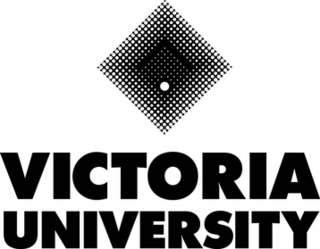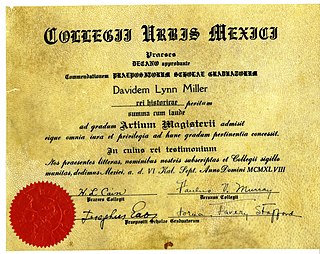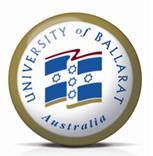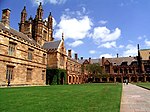
A community college is a type of undergraduate higher education institution, generally leading to an associate degree, certificate, or diploma. The term can have different meanings in different countries: many community colleges have an open enrollment policy for students who have graduated from high school, also known as senior secondary school or upper secondary school. The term usually refers to a higher educational institution that provides workforce education and college transfer academic programs. Some institutions maintain athletic teams and dormitories similar to their university counterparts.

Victoria University is a public research university based in Melbourne, Victoria, Australia. It is a dual-sector university, providing courses in both higher education and technical and further education (TAFE).

A CEGEP is a publicly funded college providing technical, academic, vocational or a mix of programs; they are exclusive to the province of Quebec's education system. A loanword from French, it originates from the French acronym for collège d'enseignement général et professionnel, sometimes known in English as a "General and Vocational College"—it is now considered a word in itself.
A Bachelor of Education is an undergraduate academic degree which prepares students for work as a teacher in schools. A Bachelor of Education program typically lasts three to four years and combines both coursework and practical experience in educational settings. The curriculum is designed to provide foundational knowledge in pedagogy, educational psychology, teaching methodologies, and subject-specific training. Graduates of this program are equipped with the skills necessary to foster a supportive and effective learning environment for their students.

A diploma is a document awarded by an educational institution testifying the recipient has graduated by successfully completing their courses of studies. Historically, it has also referred to a charter or official document of diplomacy.

Charles Sturt University is an Australian multi-campus public university located in New South Wales, Australian Capital Territory and Victoria. Established in 1989, it was named in honour of Captain Charles Napier Sturt, a British explorer who made expeditions into regional New South Wales and South Australia.
Moore Theological College, otherwise known simply as Moore College, is the theological training seminary of the Diocese of Sydney in the Anglican Church of Australia. The Anglican Archbishop of Sydney holds ex officio the presidency of the Moore Theological College Council.
TAFE NSW is an Australian vocational education and training provider. Annually, the network trains over 500,000 students in campus, workplace, online, or distance education methods of education. It was established as an independent statutory body under the TAFE Commission Act 1990. The Minister for Regional Development, Skills and Small Business is responsible for TAFE NSW.
St Clare's is a coeducational private, international day and boarding college in North Oxford, England offering the International Baccalaureate Diploma, a Preparatory IB programme, English language courses, University Pathways, Gap Year study and IB teacher training workshops.
Kelvin Grove Teachers' College was established in 1961 to provide courses in primary and secondary teacher education from its predecessor the Queensland Teachers' Training College.
Melbourne Polytechnic, formerly NMIT, is an institute of higher education and vocational education (TAFE) located in Melbourne, Australia that has been operating since around 1910.

The University of Ballarat, Australia was a dual-sector university with multiple campuses in Victoria, Australia, including its main Ballarat campus, Melbourne, Sydney, and Adelaide that were authorized by the university to provide diploma, undergraduate and postgraduate programs. The university offered traditional programs, including business, information technology, building and construction, engineering, mining, education, social sciences, nursing, hospitality, and art.

Nursing in Australia is a health care profession. Nurses and midwives form the majority (54%) of Australian health care professionals. Nurses are either registered or enrolled. Registered nurses have broader and deeper education than enrolled nurses. Nurse practitioners complete a yet higher qualification. Nurses are not limited to working in hospitals, instead working in a variety of settings. Australian nurses are in demand as traveling nurses, particularly those with advanced qualifications.
Macarthur Institute of Higher Education was an Australian tertiary education institution from 1974 to 1989. It was known as the Milperra College of Advanced Education until 1983.
The Sydney College of Advanced Education was a tertiary education institution in Sydney, New South Wales, Australia. It existed from 1982 to 1989.
Central Institute of Technology was a Technical and Further Education (TAFE) institution based in Perth, Western Australia until 2016 when it became a part of North Metropolitan TAFE. It was the equal oldest post-secondary educational institution in Western Australia and the largest TAFE institution in Perth. Historically it was also known by the names of Perth Technical College, Central Metropolitan College of TAFE (CMC) and Central TAFE. On April 11, 2016 following a reform of all TAFEWA colleges, Central Institute of Technology amalgamated with West Coast Institute of Training and became known as North Metropolitan TAFE.

The Victorian College of the Arts (VCA) is the arts school at the University of Melbourne in Australia. It is part of the university's Faculty of Fine Arts and Music (FFAM). It is located near the Melbourne city centre on the Southbank campus of the university.

Lillian Daphne de Lissa was an early childhood educator and educational theorist in Adelaide, South Australia and the United Kingdom in the twentieth century. She was head hunted to lead Gipsy Hill College in South London, a key part of Kingston University, that spread the ideas of Montessori education and the Dalton Plan.
Nepean College of Advanced Education was an Australian higher education institution from 1973 to 1989.

Cara, Lady David was an Australian educator, feminist, and social reformer.











